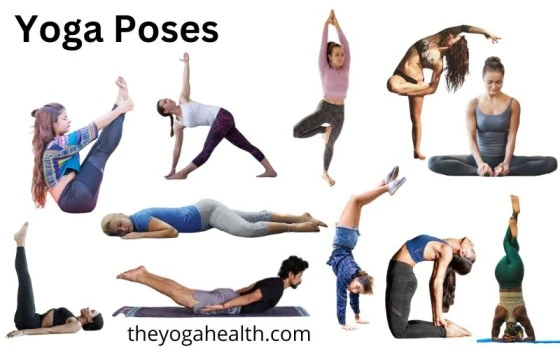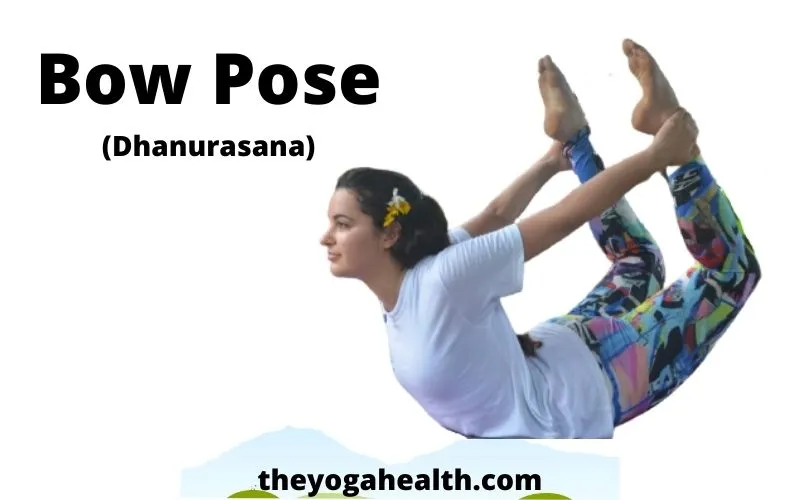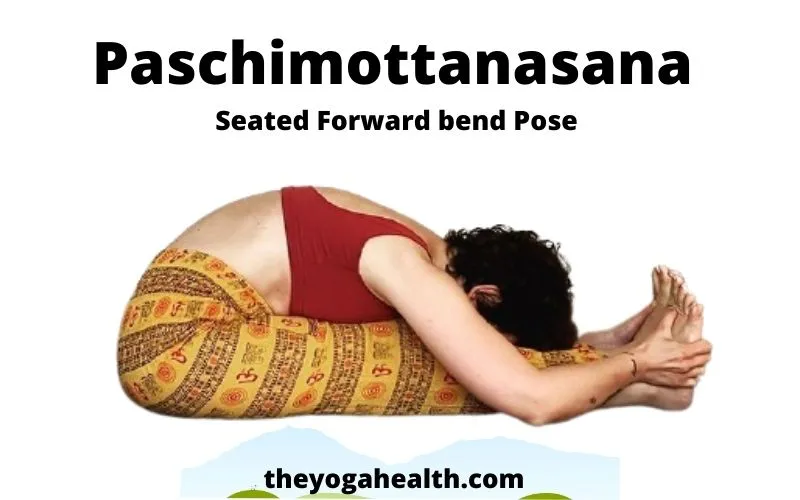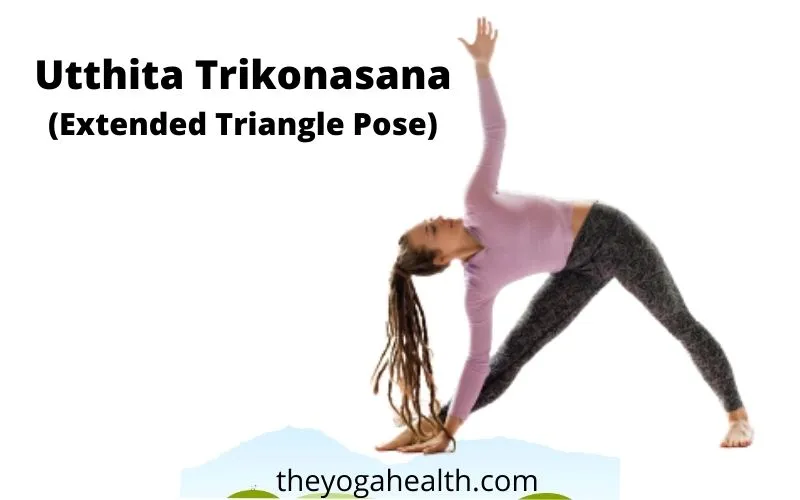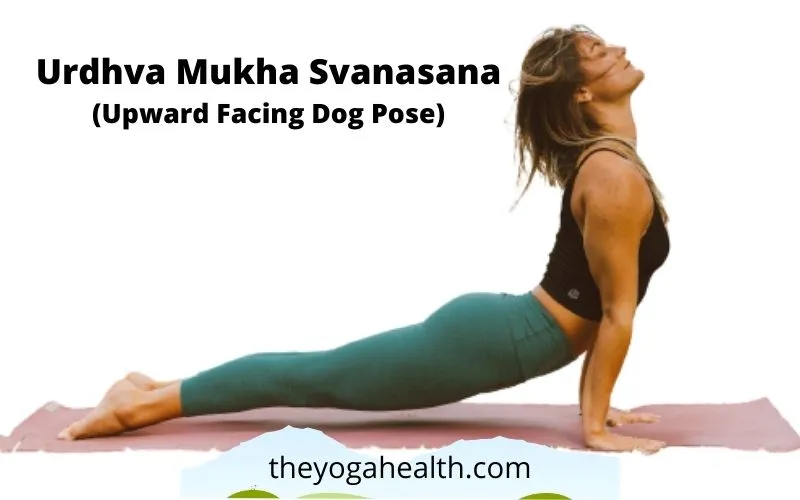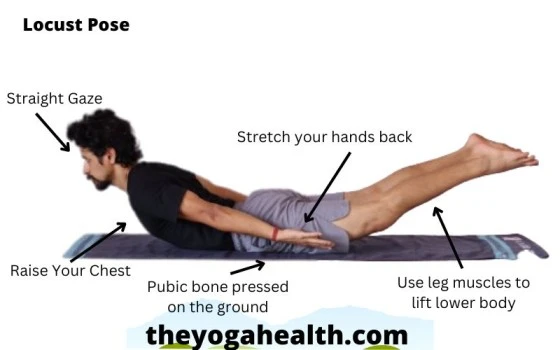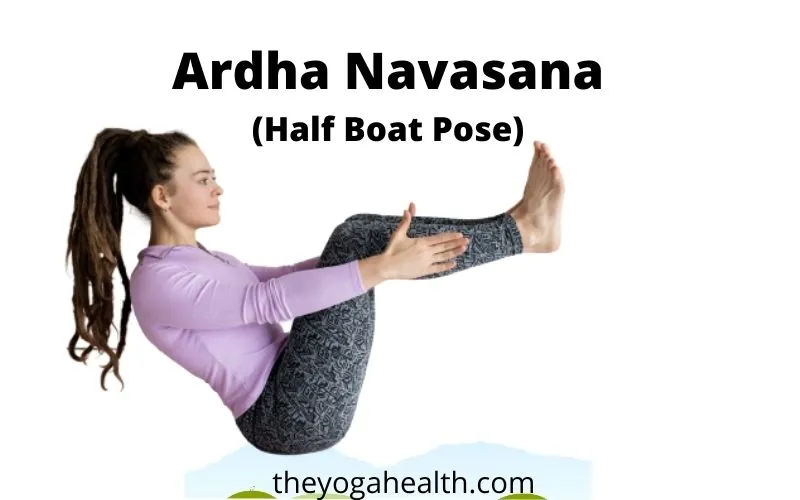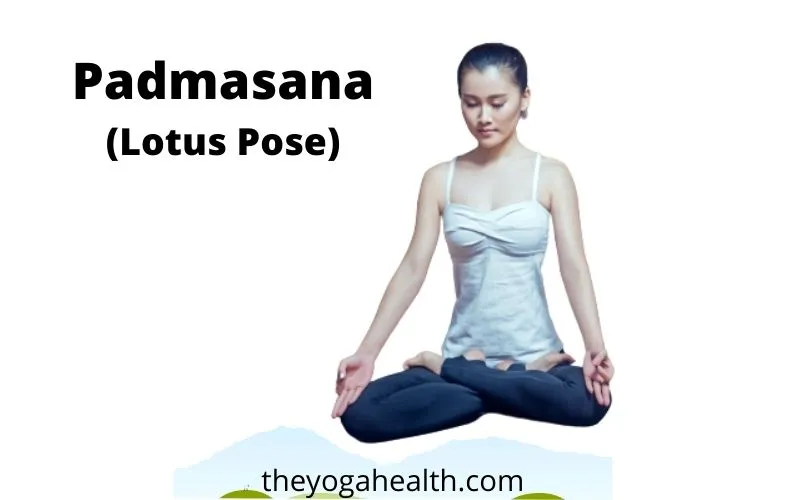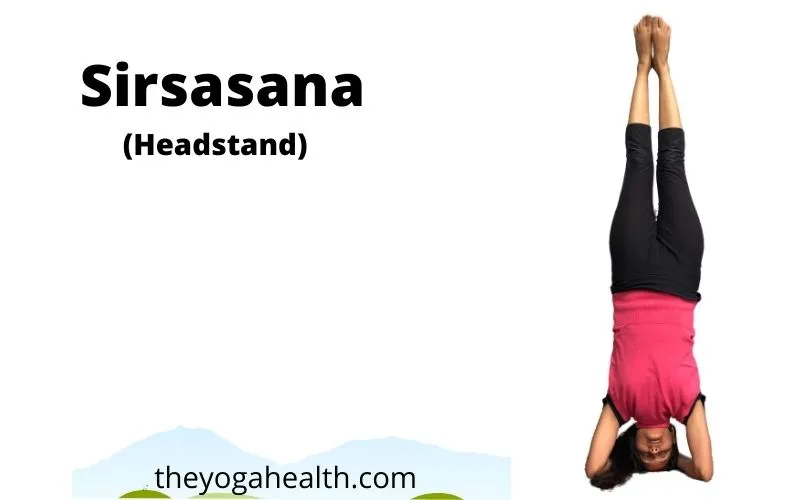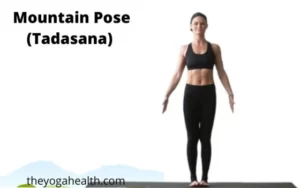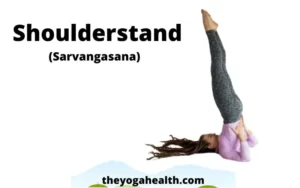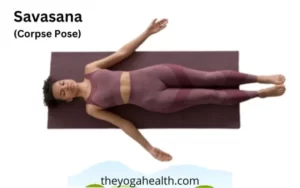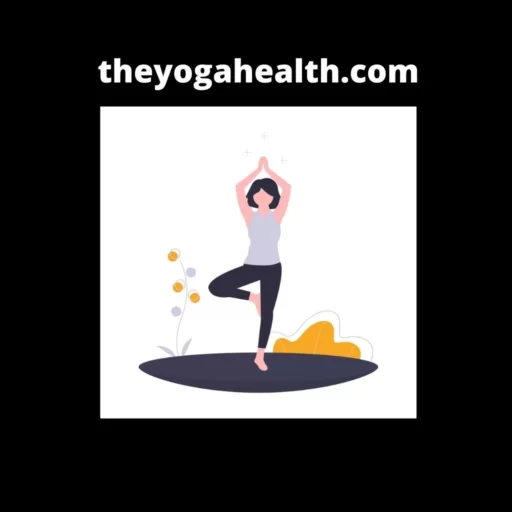Welcome to our comprehensive guide of yoga poses, here we go deep into the world of yoga to help you unlock inner peace and physical well-being.
In this article, we will explore various yoga poses, know their benefits, and see how these poses can have positive impact on your mind, body, and soul.
Table of Contents
Comprehensive List Of Yoga Poses
Yoga asanas are physical postures designed to bring harmony between the body, mind, and spirit. In this article we have given a complete list of Beginner, Intermediate and advanced Yoga poses for the convenience of the yoga lovers.
Each pose targets specific muscle groups and energy centers, promoting physical strength and mental clarity.
As you practice these poses, you cultivate a profound sense of awareness, mindfulness, and presence, creating a deeper mind-body connection.
The Benefits of Yoga Poses
Yoga has gained immense popularity in recent years due to their numerous physical and mental health benefits. Your life could undergo a profound transformation if you incorporate yoga into your everyday routine.
Here are some of the benefits you can experience through regular practice of yoga:
Improved Flexibility: Yoga postures gently lengthen and stretch your muscles, increasing your range of motion and flexibility.
Increased Strength: Yoga require you to engage and hold various muscle groups, resulting in increased strength and muscle tone.
Enhanced Balance: Balancing yoga help improve stability and core strength, leading to better overall balance.
Stress Relief: Yoga incorporates mindful breathing and meditation, which can reduce stress, anxiety, and promote relaxation.
Improved Posture: A regular yoga practice can rectify postural abnormalities, resulting in better alignment and less physical strain on the body.
Better Focus and Mental Clarity: The combination of movement, breath control, and meditation in yoga helps improve concentration and mental clarity.
Yoga Effects On Children
In a recent research in 2014 on effects of Yoga training on school going children it was found that yoga improves micronutrient absorption among children even when no extra micronutrient supplements were provided to them.
It was observed that Yoga being inexpensive health regimen can be incorporated as a potent therapy in the school curriculum, to improve health of the children.
Yoga practice embraces the mind, body, and spirit, providing numerous benefits for individuals of all fitness levels. If you are a beginner seeking to embark on a yoga journey, it’s important to start with foundational poses that will help you build strength, flexibility, and mindfulness.
As you grow with your daily yoga practice and gain more flexibility and confidence you can switch to intermediate poses. Eventually you will find yourself doing advanced poses.
We will look at a range of basic, intermediate, and advanced poses in this article, each with its own special benefits.
Yoga Poses For Beginners
1. Tadasana (Mountain Pose)
Tadasana, also known as Mountain Pose, serves as a fundamental standing pose that promotes body awareness and improves posture. Stand tall with your feet together or hip-width apart, grounding yourself into the earth.
Lengthen your spine, relax your shoulders, and activate your abdominals. This pose establishes a strong foundation for other standing poses.
2. Cobra Pose (Bhujangasana)
Cobra Pose is a gentle backbend that strengthens the back muscles and opens the chest, promoting spinal flexibility. Lie on your stomach, placing your hands under your shoulders. Press your palms into the floor, inhale, and lift your chest while keeping your pelvis grounded. Draw your shoulder blades back and down, gazing straight forward or slightly upward.
3. Child Pose (Balasana)
Among the relaxation poses Child Pose has special place, it is a restorative posture that encourages relaxation and relieves stress. Kneel on the floor, then lean back and forward on your heels with your torso resting between your thighs.
You can either extend your arms in front of you or can place them alongside your body. Allow your forehead to rest on the mat and breathe deeply, surrendering any tension or fatigue.
4. Butterfly Yoga Pose (Baddha Konasana)
Butterfly Yoga Pose, also known as Baddha Konasana or Bound Angle Pose, stretches the inner thighs and groins while opening the hips. It is one of the best among poses for all urinary related issues.
You can start by sitting on the yoga mat, bringing the soles of your feet together, bending your knees, and letting your knees fall out to the sides of your body. Gently press your thighs toward the floor, maintaining an upright posture. You can grip onto your feet using your hands for support.
5. Bow Pose (Dhanurasana)
Bow Pose is an energizing backbend that strengthens the back, stretches the entire front body, and stimulates the digestive system. Lie down on floor on your stomach with your arms by your sides. Bend your knees, reach back, and hold onto your ankles. Inhale deeply, lifting your chest and thighs off the mat while simultaneously kicking your feet into your hands.
6. Paschimottanasana (Seated Forward Bend Pose)
The next among intermediate poses is the Paschimottanasana, also known as Seated Forward Bend Pose, is a calming pose that stretches the entire back body, hamstrings, and spine. Stretch your legs out in front of you as you sit on the ground or a yoga mat.
Inhale, lengthen your spine, then exhale, hinge forward from the hips, reaching toward your feet or ankles. During the pose keep your back straight and avoid rounding the spine.
7. Fish Pose (Matsyasana)
Fish Pose is a gentle backbend that counteracts the effects of prolonged sitting, improves posture, and opens the chest and shoulders. On your back, pull your chest up while arching your back. Tuck your hands under your hips. Rest the crown of your head on the floor or on the block for support. Breathe deeply, expanding your chest with each inhale.
8. Tree Pose (Vrksasana)
Tree Pose is a balancing posture that strengthens the legs, improves focus, and enhances stability. Start by standing tall, shift your weight onto one leg, and place the sole of your opposite foot on the inner thigh or calf of your standing leg. Find a focal point to gaze at and bring your hands together in front of your chest in a prayer position.
9. Utthita Trikonasana (Extended Triangle Pose)
Utthita Trikonasana, or Extended Triangle Pose, is a standing pose that strengthens the legs, stretches the hamstrings and hips, and improves overall balance. Put your front foot forward, take a wide stance, and raise your arms parallel to the ground.
Reach forward with your front hand, then hinge at the hips and extend your other arm upward, forming a triangle shape with your body.
10. Urdhva Mukha Svanasana (Upward Facing Dog)
Urdhva Mukha Svanasana, or Upward Facing Dog Pose, is a rejuvenating backbend that strengthens the arms, shoulders, and spine. Lay down on the mat with your hands next to your chest, start by lying facedown.
Lift your chest and thighs off the ground, it requires exerting pressure with your hands and the tops of your feet.Keep your shoulders relaxed and gaze straight in front of you.
11. Adho Mukha Svanasana (Downward Facing Dog Pose)
The next pose is Adho Mukha Svanasana, or Downward Facing Dog Pose, is an invigorating pose that strengthens the upper body, stretches the hamstrings, and lengthens the spine.
Begin on your hands and knees, after that lift your hips up and back, forming an inverted “V” shape with your body. Press your hands firmly into the ground and aim to keep your heels reaching toward the floor.
12. Locust Pose (Salabhasana)
Locust Pose is a back-strengthening pose that targets the muscles of the upper and lower back, buttocks, and hamstrings. Lie on your stomach with your arms alongside your body and your forehead on the mat. Inhale, then lift your chest, arms, and legs off the ground simultaneously. Keep your gaze forward and maintain the lift for a few breaths.
13. Urdhva Prasarita Padasana (Upward Extended Feet Pose)
Upward Extended Feet Pose, or Urdhva Prasarita Padasana, is a grounding and invigorating pose that strengthens the abdominal muscles and improves circulation in the legs. Laying flat on your back with your arms out to the sides is a good place to start. Lift your legs slowly as you inhale, making sure to keep them parallel to the floor and straight.
Flex your feet and engage your core to maintain stability. Hold this pose for several breaths, focusing on the upward energy flowing through your legs. Upward Extended Feet Pose stimulates the digestive system, enhances blood flow, and cultivates a sense of stability and balance.
14. Camel Pose In Yoga: (Ustrasana)
Camel Pose, also known as Ustrasana, is a powerful backbend pose that opens up the chest, stretches the entire front of the body, and increases spinal flexibility. Kneel on the yoga mat with your knees hip-width apart to start this pose. Place your hands on your lower back, fingers pointing downward.
As you inhale deeply, lift your chest upward, arching your back and allowing your head to gently fall back. Ensure that you engage your core muscles to maintain stability and prevent straining your lower back. Hold this pose for a few breaths, gradually increasing the duration as you progress in your practice.
15. Crocodile Pose (Makrasana)
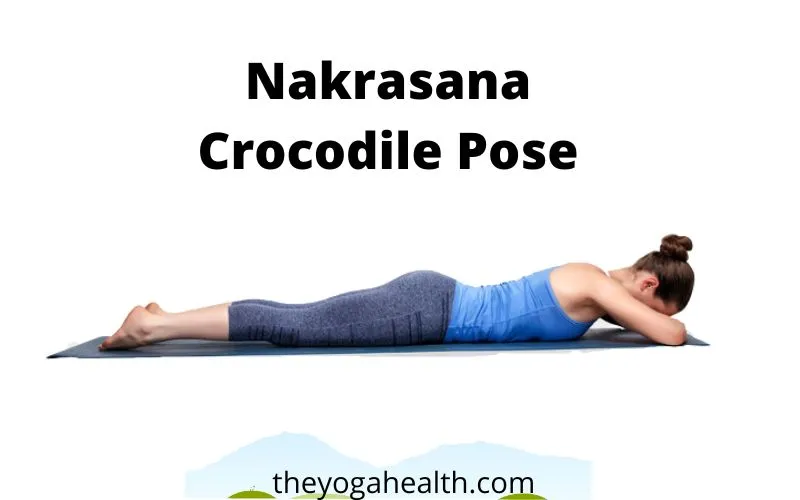
Crocodile Pose, or Makarasana, is a rejuvenating pose that promotes deep relaxation and restoration. This posture is often practiced as a resting position between more active asanas. To enter Crocodile Pose, lie on your stomach with your legs extended and your forehead resting on your stacked hands.
Focus on deep, regular breathing while closing your eyes and relaxing any tension in your body.
Allowing your breath to flow naturally will make you feel calm and at peace with yourself. Crocodile Pose is not only a physical respite but also a mental and emotional oasis, offering an opportunity to recharge and unwind.
Intermediate Yoga Poses
1. Parsva Dhanurasana (Side Bow Pose)

Side Bow Pose, also known as Parsva Dhanurasana, is a challenging and dynamic pose that combines elements of strength and flexibility. This asana targets the core, stretches the quadriceps, and opens the shoulders and chest.
To enter Side Bow Pose, begin in a seated position with your legs extended in front of you. Bend your right knee and bring your right foot towards your right glute. Grab the outside of your right foot with your right hand as you extend your arm backward.
As you inhale, lift your left arm overhead and, with an exhale, lean to the right, simultaneously kicking your right foot into your hand. Maintain a strong core and focus on your breath as you hold this pose. Repeat on the other side to achieve balance and symmetry in your practice.
2. Parivrtta Trikonasana (Revolved Triangle Pose)
Parivrtta Trikonasana, or Revolved Triangle Pose, is an intermediate standing twist that stretches the legs, hips, and spine while improving balance and digestion. Start in Triangle Pose (Utthita Trikonasana), then place your lower hand on the mat or a block. Twist your upper body, extending your other arm toward the ceiling, and gaze up.
3. Half Boat Pose (Ardha Navasana)
Half Boat Pose is a core-strengthening pose that targets the abdominals and hip flexors. Sitting on the floor or on your yoga mat with your legs out in front of you, you can start this pose.
Lean back slightly, engage your core, and lift your legs off the ground, balancing on your sitting bones. Reach your arms forward alongside your legs, parallel to the floor you are practicing this pose. Maintain a straight spine and breathe steadily.
4. Boat Pose Yoga (Paripurna Navasana)
Boat Pose, also known as Paripurna Navasana, is an advanced core exercise that strengthens the abdominals, hip flexors, and lower back. Kneel down on the yoga mat while raising your feet off the floor. Straighten your legs, forming a “V” shape with your body. Extend your arms parallel to the floor, maintaining a strong and stable core.
5. Lotus Pose (Padmasana)
Lotus Pose is a classic seated posture for meditation that enhances hip flexibility and promotes a sense of calmness. Legs extended, crossed at the ankles, and slide feet up onto opposing thighs while seated on the floor. Rest your hands on your knees or in a mudra position. Keep your spine straight and breathe deeply.
6. Virasana (Hero Pose)
Virasana, or Hero Pose, is a seated pose that stretches the thighs, knees, and ankles while promoting proper posture. Sit back on your heels while keeping your toes pointed straight back as you kneel to the ground. Place your hands on your thighs or in a prayer position at your heart center. Stretch out your spine as much as you can, let your shoulders drop, and take a few deep breaths.
7. Halasana (Plow Pose)

Halasana, or Plow Pose, is a pose that promotes relaxation, stretches the spine, and stimulates the thyroid gland. It is one of the best among poses for thyroid problems. Lie on your back and raise your legs upwards while pointing your toes toward the floor behind you to do this pose.
Your hands can be used to support your lower back or your upper back for more support. Keep your neck long and breathe slowly.
8. Shoulderstand (Sarvangasana)
Shoulderstand, or Sarvangasana, also considered as mother of all poses, is an advanced pose that stimulates the thyroid gland, improves circulation, and strengthens the upper body.
Lay on your back, extend your legs upwards toward the sky, and place your hands to support your lower back. Continue to lift your hips and legs overhead until your toes point toward the sky. Keep your neck supported and relax your facial muscles.
9. Janu Sirsasana (Head To Knee Pose)
Janu Sirshasana, or Head to Knee Pose, is a seated forward bend that stretches the hamstrings and releases tension in the lower back. Start by sitting on the floor with one leg bent and the other extended straight in front of you, with the sole of the bent leg resting against the inner thigh. Slowly fold forward, reaching for your extended foot or ankle while keeping your spine long.
Advanced Yoga Poses
1. Wheel Pose (Chakrasana)
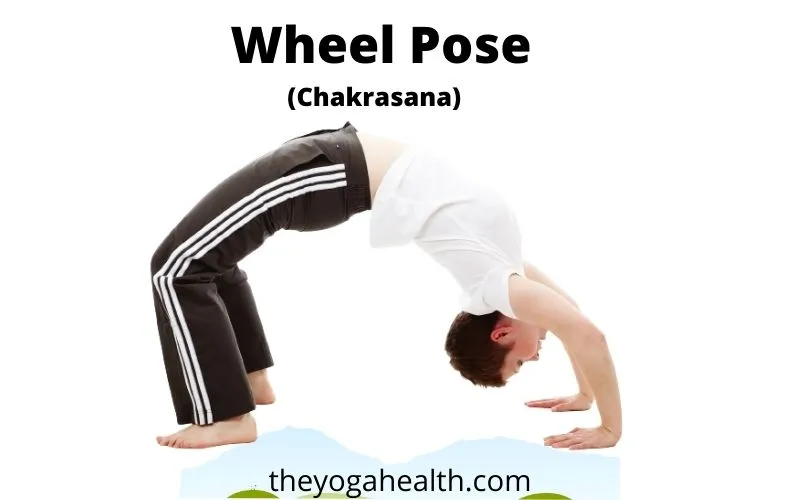
Wheel Pose, or Chakrasana, is an advanced backbend pose that strengthens the arms, shoulders, and legs while increasing spinal flexibility. This pose has special place among the yoga asanas for its various benefits.
To perform this pose, lie on your back with your knees bent and your feet flat on the floor with your hips spaced closely together. Bend your elbows and place your palms on the floor beside your ears. Press into your hands and feet and simultaneously lift your hips and chest off the ground.
2. Headstand (Sirsasana)
Headstand, or Sirsasana, is an advanced yoga pose that is also considered as the father of all yoga asanas. It enhances stamina, sharpens focus, and circulates more blood to the brain.
Start on your hands and knees, entwine your fingers, and place them on the mat while positioning your forearms to form a triangle. Tuck your toes, elevate your hips, and place the top of your head on the mat. Slowly walk your feet closer to your face until your hips are stacked above your shoulders.
3. Yoga Handstand (Adho Mukha Vrksasana)
Yoga Handstand, or Adho Mukha Vrksasana, is an advanced and toughtest yoga pose, that requires core strength, stability, and balance. Begin in Downward Facing Dog Pose, then walk your feet closer to your hands.
Lift one leg off the ground while shifting your weight into your hands and Kick the other leg up, straightening both legs into a vertical position. Engage your core muscles and focus on maintaining your balance.
Conclusion for Yoga poses:
Starting a yoga practice is a life-changing experience that promotes both physical and emotional well-being. Whether you’re a beginner, intermediate, or advanced practitioner, these Yoga poses provide a solid foundation to enhance strength, flexibility, and mindfulness.
Remember to always practice yoga with awareness, listen to your body, and seek guidance from a qualified instructor if needed. Enjoy the journey of self-discovery and inner harmony that yoga brings!
Do share your experience of doing Yoga and if You have any question or comments regarding this Post, you can mention so in the comments section below.

